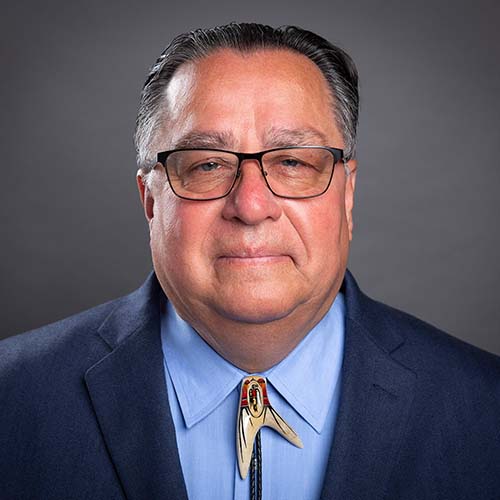
- Details
- By Native News Online Staff
The creation of Native American art is rooted in a deep understanding of cultural protocols, histories and traditions. A new exhibition that opens Saturday, November 15, 2025 at the Autry Museum of the American West, Creative Continuities: Family, Pride, and Community in Native Art, highlights selected works from the museum’s Native American collections to explore three core aspects of Native culture: Knowing, Creation and Transference.
The exhibition features three contemporary Plains artists — John Pepion (Blackfeet), Brocade Stops Black Eagle (Crow) and Jessa Rae Growing Thunder (Dakota/Nakoda) — who reflect on their connections to works made by their ancestors. Each artist curated a section of the show, selecting pieces from their communities and interpreting them through one of the exhibition’s central themes.
Museum officials say the combination of cultural objects and personal stories is intended to help visitors better understand the diversity of Native cultures, histories and traditions that span tribal boundaries and bridge past and present.
The creation of Native American art draws on deep knowledge of cultural protocols, histories, and traditions. Creative Continuities: Family, Pride, and Community in Native Art highlights selected works from the Autry’s Native American collections to examine the meanings embedded in three core aspects of Native culture: Knowing, Creation, and Transference.
Three contemporary Plains artists—John Pepion (Blackfeet), Brocade Stops Black Eagle (Crow), and Jessa Rae Growing Thunder (Dakota/Nakoda)—reflect on their connections to works made by their ancestors. Each artist curated a section of the exhibition, interpreting pieces from their communities through one of the exhibition’s central concepts.
By bringing together cultural objects and personal stories, Creative Continuities seeks to deepen visitors’ understanding of the diversity of Native American culture, history, and traditions that transcend tribal boundaries across time.
More Stories Like This
Cherokee Film Helps Bring Indigenous Perspectives to Ken Burns’ ‘The American Revolution’‘Our Common Nature’: Yo-Yo Ma’s New Journey Through Indigenous Landscapes and Sound
Native American Designers You Should Know, Part 01
Cherokee Nation Showcases Growing Film Slate with Fall Premieres of Incentive-Supported Titles
Help us tell the stories that could save Native languages and food traditions
At a critical moment for Indian Country, Native News Online is embarking on our most ambitious reporting project yet: "Cultivating Culture," a three-year investigation into two forces shaping Native community survival—food sovereignty and language revitalization.
The devastating impact of COVID-19 accelerated the loss of Native elders and with them, irreplaceable cultural knowledge. Yet across tribal communities, innovative leaders are fighting back, reclaiming traditional food systems and breathing new life into Native languages. These aren't just cultural preservation efforts—they're powerful pathways to community health, healing, and resilience.
Our dedicated reporting team will spend three years documenting these stories through on-the-ground reporting in 18 tribal communities, producing over 200 in-depth stories, 18 podcast episodes, and multimedia content that amplifies Indigenous voices. We'll show policymakers, funders, and allies how cultural restoration directly impacts physical and mental wellness while celebrating successful models of sovereignty and self-determination.
This isn't corporate media parachuting into Indian Country for a quick story. This is sustained, relationship-based journalism by Native reporters who understand these communities. It's "Warrior Journalism"—fearless reporting that serves the 5.5 million readers who depend on us for news that mainstream media often ignores.
We need your help right now. While we've secured partial funding, we're still $450,000 short of our three-year budget. Our immediate goal is $25,000 this month to keep this critical work moving forward—funding reporter salaries, travel to remote communities, photography, and the deep reporting these stories deserve.
Every dollar directly supports Indigenous journalists telling Indigenous stories. Whether it's $5 or $50, your contribution ensures these vital narratives of resilience, innovation, and hope don't disappear into silence.
 The stakes couldn't be higher. Native languages are being lost at an alarming rate. Food insecurity plagues many tribal communities. But solutions are emerging, and these stories need to be told.
The stakes couldn't be higher. Native languages are being lost at an alarming rate. Food insecurity plagues many tribal communities. But solutions are emerging, and these stories need to be told.
Support independent Native journalism. Fund the stories that matter.
Levi Rickert (Potawatomi), Editor & Publisher

